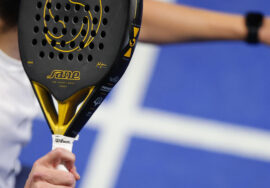
How to Run Faster Without Getting Exhausted: Techniques and Strategies
Introduction:
Running faster isn't just about moving your legs faster. It requires a combination of technique, strength, endurance and a well-defined strategy.
If you try to increase your speed without a solid foundation, you are likely to tire out too quickly or get injured.
To improve your pace without running out of energy, you need work on your stride efficiency, improve your endurance, and apply progressive speed techniques.
In this article, you will learn how to run faster without exhausting yourself, what mistakes to avoid, and what workouts you can do to improve your speed without losing endurance.
1. Key factors to run faster without fatigue
📌 🔹 Efficient running technique
✅ Maintain an upright and relaxed posture. Avoid leaning too far forward or backward.
✅ Shorten your stride and increase your cadence. Long strides generate more impact and fatigue.
✅ Use your arms correctly. Don't cross them in front of your body; use them to propel your stride.
📌 🔹 Controlled breathing
✅ Use diaphragmatic breathing to make better use of oxygen.
✅ Apply the 2:2 rhythm (inhale in two steps, exhale in two) to maintain good airflow.
📌 🔹 Energy savings in the stride
✅ Avoid bouncing too much. Running with a reactive stride reduces effort.
✅ Land on the midfoot instead of the heel to better utilize the energy of the push.
📌 🔹 Muscle strengthening for greater power
✅ Works glutes and core. A strong core improves stability and stride efficiency.
✅ Do plyometric exercises. Explosive jumps increase leg strength.
📌 🔹 Progressive rhythm and effort control
✅ Don't go out too quickly. Start at a moderate pace and gradually accelerate.
✅ Use the "negative split" technique. Run the second half of the session faster than the first.
👉 Conclusion: If you apply these techniques, you will run faster without expending unnecessary energy.
2. Training strategies to increase speed without exhaustion
📌 🔹 Interval training
✅ Example: 6x400 meters at a fast pace with 1 minute recovery.
✅ Benefit: Increase aerobic capacity and maximum speed without extreme fatigue.
📌 🔹 Fartlek training (changes of pace)
✅ Example: 4 minutes at a fast pace + 2 minutes at a slow pace, repeat 6 times.
✅ Benefit: Improves resistance to fatigue and adaptation to different rhythms.
📌 🔹 Hill Series
✅ Example: 5x200 meters uphill with a gentle jog downhill.
✅ Benefit: Develops explosive strength and stride efficiency.
📌 🔹 Speed technique (running drills)
✅ Example: Skipping, heels to the glutes, long strides (3 sets of 20 meters each).
✅ Benefit: Improves coordination, biomechanics and reactivity on the ground.
📌 🔹 Long runs at a controlled pace
✅ Example: 10 km at a medium pace without sudden changes.
✅ Benefit: Increases aerobic capacity and endurance during long runs.
👉 Conclusion: These workouts will help you improve your speed without letting fatigue slow you down.
3. Common mistakes when trying to run faster (and how to avoid them)
❌ Increase speed without improving technique.
📌 Solution: Work on technique drills to make each stride more efficient.
❌ Running with strides that are too long.
📌 Solution: Shorten your stride and increase your cadence to reduce impact.
❌ Neglecting breathing and becoming exhausted prematurely.
📌 Solution: Control breathing with a 2:2 or 3:3 ratio to maintain adequate oxygen flow.
❌ Do not alternate speed training with long runs.
📌 Solution: Mix high-paced sessions with endurance workouts to maintain balance.
👉 Conclusion: Avoiding these mistakes will allow you to improve without wearing yourself down unnecessarily.
4. 4-Week Plan to Run Faster Without Burning Out
📌 Example of weekly progression:
📅 Week 1-2: Speed and Technique Development
✅ Day 1: Short intervals (6x200m fast + 1 min recovery).
✅ Day 3: Steady pace shooting of 6-8 km.
✅ Day 5: Technique drills + short sprints (5x30m).
📅 Week 3-4: Increased endurance and power
✅ Day 1: Long series (4x800m at a fast pace + 2 min rest).
✅ Day 3: Fartlek (5×3 min fast + 2 min slow).
✅ Day 5: Hill series + 10km long run.
👉 Conclusion: This plan will help you run faster without feeling exhausted.
5. How to measure your progress in speed and endurance
📌 🔹 Improvement indicators
✅ You reduce your time on short distances without feeling more fatigue.
✅ You maintain the pace on long runs without losing speed.
✅ You notice that you run with more power and efficiency with each stride.
📌 🔹 Methods for evaluating progress
✅ Record your average pace and see if it has improved over the course of a month.
✅ Observe how you feel after each run: less fatigue indicates improvement.
✅ Monitor your cadence (steps per minute) and see if it's more efficient.
📌 🔹 Keys to maintaining motivation
✅ Set time goals and work progressively toward them.
✅ Change your routes and workouts to avoid monotony.
✅ Celebrate every improvement, no matter how small, in your speed and endurance.
👉 Conclusion: If you keep track of your progress, you'll see improvements in your pace without feeling exhausted.
Conclusion
Run faster It's not just about strength, but about technique, strategy and efficiency. If you improve your biomechanics, progressively work on your speed, and control your breathing, you'll increase your pace without exhausting yourself.
📌 Summary of keys to improving speed without fatigue:
✅ Maintain good running technique (posture, stride, arms).
✅ Control your breathing to maintain a constant flow of oxygen.
✅ Integrates interval training, fartlek, and hill series.
✅ Alternate speed sessions with long runs to improve endurance.
✅ Evaluate your progress and adjust your training intensity accordingly.
💡 If you follow these tips, you'll notice you're running faster with less effort in just a few weeks. Start improving your speed without burning out today!
Recommendation of the week
⚡ Run Faster in 7 Days Challenge
For one week, try this plan:
✅ Day 1: Short intervals (6x200m fast + 1 min rest).
✅ Day 3: Long run with pace control.
✅ Day 5: Technique drills + 20 minute fartlek.
After 7 days, you'll notice you can run faster without fatigue. Take on the challenge and improve your speed!


